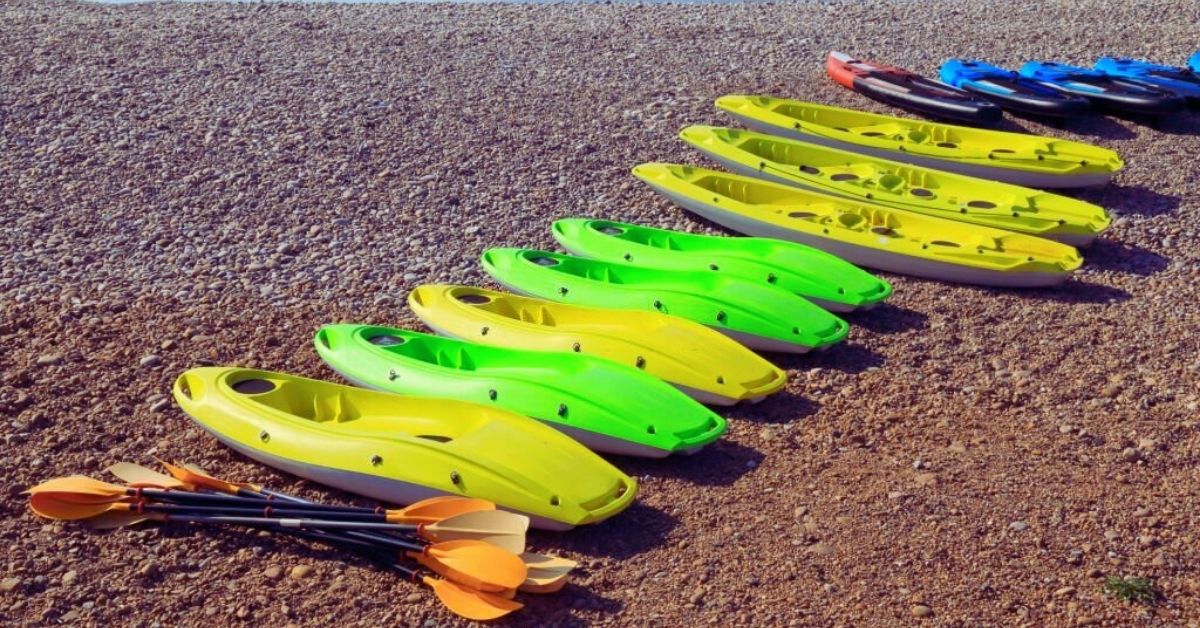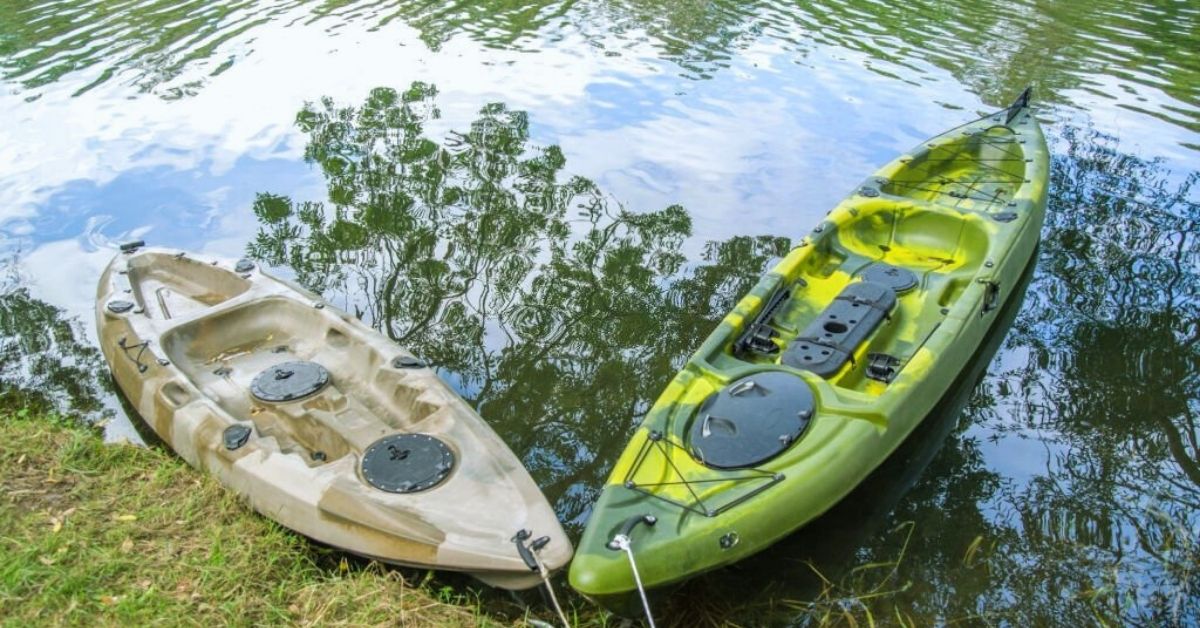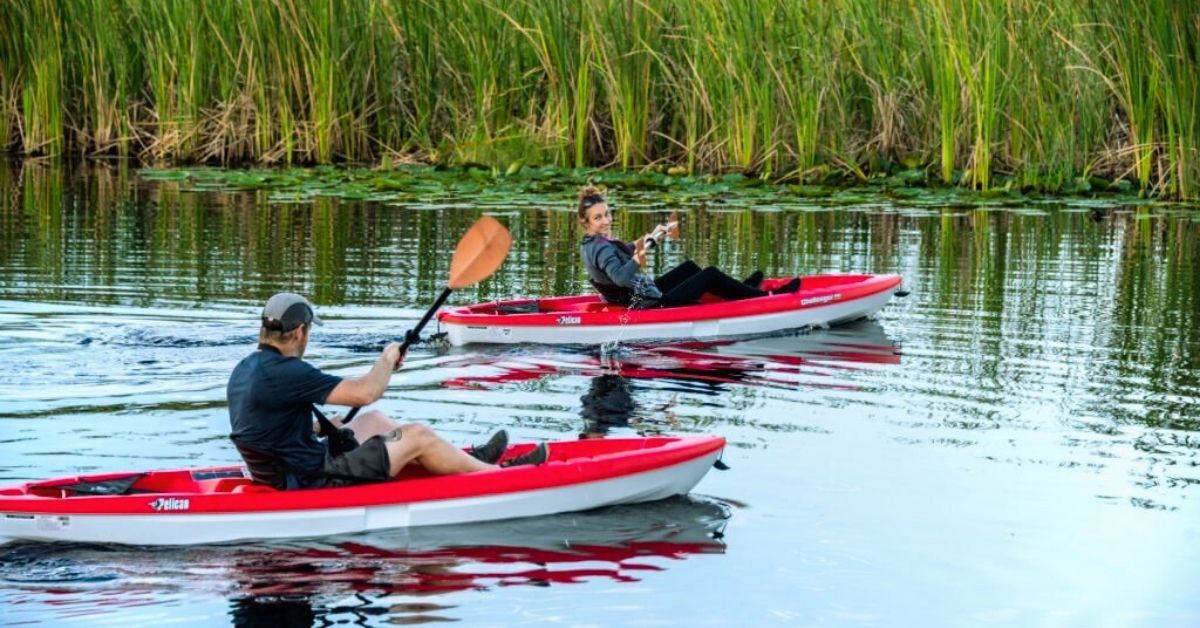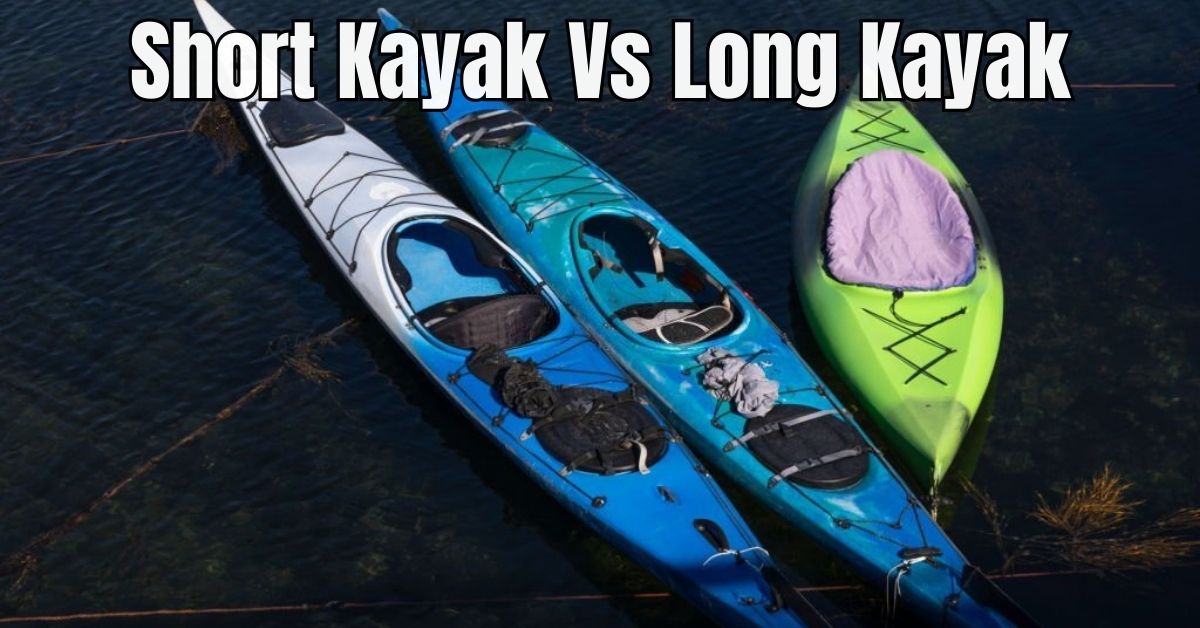Kayaking is a terrific way to enjoy the outdoors. Choosing a kayak may be difficult, particularly for beginners. Choosing the appropriate kayak length is crucial.
The length of your kayak affects your water experience. A longer kayak is faster and more stable, while a shorter one is simpler to carry.
We’ll discuss the benefits and downsides of short and long kayaks in this blog article to help you choose. We will examine your ability level, the water you will kayak in, and your kayaking ambitions. By the conclusion of this piece, you’ll know what kayak is ideal for you.
Table of Contents
1. Introduction
Kayaking is an exciting way to discover beautiful rivers, landscapes, and wildlife. Choose the proper kayak for a fun and safe water experience, whether you’re a novice or an experienced paddler.
A kayak is more than transportation—it’s an extension of oneself. It’s your friend on thrilling trips and helps you perform and feel comfortable. Finding the right kayak might be difficult due to the variety of styles and sizes.
kayaking and kayak selection
The correct kayak relies on your skill level, the water type, and your hobbies. One of your biggest choices is whether to choose a short or long kayak.
Recreational kayaks are under 10 feet long. Their agility and stability make them perfect for lakes, slow-moving rivers, and quiet waterways. These kayaks are ideal for novices and casual kayakers who choose stability and control above speed.
Long kayaks, often called touring or sea kayaks, are over 12 feet long. These kayaks are for expert paddlers who want speed, efficiency, and longer trips. They thrive in coastal, open water, and trips that need longer distances.
Understand the differences between short and long kayaks to make an educated choice depending on your tastes and usage. Choosing the appropriate kayak will improve your performance and water safety.
This blog article will discuss the pros and downsides of short and long kayaks in the future parts. You’ll know which kayak suits your kayaking ambitions at the end. Let’s explore kayaking to discover your ideal kayak!
2. Understanding the difference between short and long kayaks
The length of the kayak is important while picking one. Knowing the difference between short and long kayaks is essential to choose the right one.

Short
Short kayaks (8–12 feet) have several benefits. First, they make small rivers and tight curves easier to manage. This makes them perfect for kayakers who appreciate exploring twisting rivers, streams, and rocky coasts.
The decreased weight of shorter kayaks makes them simpler to carry. This is helpful if you regularly load and unload your kayak or have limited strength or movement.
Long Kayaks
Long kayaks, usually 12–16 feet long, have their own benefits. Boats with longer hulls are known for their increased speed and efficiency, making them perfect for sea kayakers and those who enjoy touring on the water.
If you’re embarking on longer expeditions, opting for a longer kayak gives you the advantage of ample storage space to accommodate all your gear, food, and supplies. This is particularly beneficial for activities like camping or multi.
The decision between a short or long kayak depends on your specific needs, preferences, and paddling style. Factors such as the type of water you’ll be kayaking in, the distance you’ll be covering, and the gear you plan.
Another option available are mid-length kayaks, which offer a combination of speed and maneuverability. These kayaks strike a balance between the advantages of shorter and longer boats.
Before making a selection, try paddle kayaks of various lengths to see how they handle and function. Understanding the differences between short and long kayaks helps you choose one that suits your paddling style and objectives.
3. Factors to consider when choosing between a short or long kayak
A short or long kayak is one of the most significant choices when selecting a kayak. It’s important to weigh the pros and disadvantages of each solutions before choosing.
Your kayaking skills and experience are also important. Shorter kayaks are more stable and simpler to steer, making them ideal for novices or leisurely paddlers. Longer kayaks are harder to manoeuvre, but they’re faster and more efficient once you do.
Consider how much storage you’ll need. Longer kayaks have more storage, making them ideal for long journeys or hauling camping goods or fishing gear. While smaller, shorter kayaks may have fewer storage choices, so if you intend to carry a lot of stuff, choose a longer kayak.

Pros and cons of short kayaks
Short kayaks have pros and downsides that should be considered while picking one. The mobility of a short kayak is a major asset. These kayaks are better for small rivers, tight curves, and tricky water conditions since they turn more easily. Whitewater kayaking and exploring narrow, meandering streams need agility and control, which a short kayak can give.
Short kayaks are easy to carry and store. Due to their tiny size, they are lighter and simpler to transport, load, and unload from your vehicle. If you have limited storage room at home or regularly travel to kayaking destinations, a shorter kayak is easier to carry.
There are trade-offs with shorter kayaks. The biggest downsides are their slowness and tracking. Short kayaks may glide less effectively than longer ones. Longer kayaks are faster and better at tracking across big areas of water.
Shorter kayaks have less storage. A shorter kayak may not fit all your stuff or be large enough for lengthy outings. This might restrict individuals who need plenty of storage for camping, fishing, and other requirements.
In conclusion, short kayaks are ideal for confined rivers and convenience. However, they may lose speed, tracking, and storage compared to lengthier models. Consider your kayaking style and purpose to decide whether a short kayak is right for you.
Pros and cons of long kayaks
Before purchasing a long kayak, it’s important to carefully consider the advantages and disadvantages. Let’s explore some of these factors.
One significant advantage of longer kayaks is their exceptional tracking abilities. With their larger hulls, these kayaks effortlessly slice through the water, making them perfect for extended trips or venturing out into the open ocean. Their superior design minimizes the impact of wind and currents, resulting in a more stable and predictable paddling experience.
If you’re planning multi-day expeditions or need to carry a lot of supplies, long kayaks are the way to go. They offer greater storage capacity with additional compartments for loading camping gear, food, and water. You won’t have to compromise comfort or agility while carrying all your essentials.
However, lengthy kayaks may be difficult to manoeuvre in tiny waters. Their length makes them less nimble, making turns and obstacles harder. A shorter kayak may be preferable for fishing or wave surfing in smaller rivers or exploring smaller rivers.
Long kayak transportation and storage are additional factors. They may need a roof rack or trailer to carry due to their size. If you have a small garage or shed, storing a long kayak might be difficult.
Your requirements and tastes determine whether you want a long or short kayak. Long kayaks are ideal for extended voyages that need stability, tracking, and storage. However, a shorter kayak may be superior for agility, adaptability, and portability. Make an educated kayaking style selection based on your intended usage, paddling environment, and personal preferences.
Finally, consider your comfort and physical ability. Taller people feel more comfortable in longer kayaks due to their increased legroom and weight capacity. However, shorter kayaks are simpler to move and manoeuvre off the water, which might be beneficial if you have limited strength or mobility.
The choice between a short and long kayak relies on your requirements and preferences. Choose a kayak that suits your skill level, water type, storage needs, and comfort to improve your kayaking experience.
4. How skill and experience impact kayak choice
Choosing the right kayak depends on your skill level and expertise. Choose a kayak that suits your skill level and water experience.
For novices, a shorter kayak is best. Kayaks are easy to manage and maneuver, making them excellent for beginners. Shorter kayaks are more stable, giving novices who are uncertain of their balance a feeling of assurance.
Longer kayaks may be better for experienced kayakers. Experienced paddlers may cover more distance with less effort with longer kayaks, which are quicker and more efficient. One important advantage of these kayaks is their improved performance in tracking.
They maintain a straighter path and are less susceptible to wind and currents, making them ideal for long-distance kayakers and those navigating challenging conditions.
When picking a kayak, honestly assess your skill level and experience. While a longer kayak may be enticing for its speed or sophisticated features, operating one that surpasses your ability might be harmful and reduce your pleasure of the sport. Remember that you may always upgrade to a longer kayak as you acquire water confidence.
Personal tastes, ambitions, and comfort level determine the perfect kayak for you. Assessing your skill level and expertise can help you pick a kayak that increases your kayaking experience and lets you enjoy the water.
5. Types of kayaking activities and their suitability for short and long kayaks
The sort of kayaking you want to do is important when picking a kayak. distinct kayak activities demand distinct features and qualities, including length.

Short kayaks (8–12 feet) are agile and maneuverable. They thrive in whitewater kayaking, which requires swift turns and small areas. Their tiny size makes them simple to navigate in rapids and fast-flowing rivers. For recreational paddling on calm lakes and ponds, short kayaks are exciting and responsive for beginners and experts.
However, long kayaks (12–16 feet) are built for speed and stability. Touring and sea kayaking need lengthy distances and steadiness on open water, making them perfect. Longer kayaks track better, making straight paddling easier. They can carry camping supplies and overnight vacations due to their enhanced storage space.
Consider your kayaking aims and preferences when choosing a small or long kayak. Short kayaks are ideal for adrenaline junkies seeking whitewater rapids or those who want agility. If you want to explore large areas of water and go on multi-day expeditions, a longer kayak with speed and storage may be better.
Your demands and hobbies determine whether you choose a short or long kayak. Understanding the pros and cons of each kind will help you choose one that enhances your kayaking experience and makes every minute on the water fun.
6. Maneuverability vs. speed: Finding a balance
Choosing the right kayak requires balancing maneuverability and speed. Understanding the pros and cons of short and long kayaks can help you choose.
The maneuverability of short kayaks is outstanding. Shorter ones are simpler to turn and manoeuvre in confined areas. This makes them suitable for kayaking in tight rivers, meandering channels, or locations with numerous rocks or fallen trees. Shorter kayaks are great for exploring remote waters or whitewater adventures.
However, long kayaks are fast and efficient. Slender and elegant, they glide through the water with minimum resistance, helping you to cover greater distances with less effort. For long-distance paddling, touring, or racing, a longer kayak provides speed and stability. Longer kayaks offer greater storage capacity, making them ideal for multi-day camping or fishing expeditions.
Speed or maneuverability relies on your paddling technique and the water you wish to explore. If you prefer agility and want to traverse tight locations, a shorter kayak is recommended. If you want speed and vast distances, a longer kayak is better.
Remember to try out several kayak lengths and types before buying. Rent or borrow kayaks from friends to test their performance. This hands-on experience will help you choose the correct kayak and discover what works best for you.
7. Comfort and storage in short and long kayaks
Comfort and storage are key when selecting a short or long kayak. Comfort is improved with 8- to 12-foot kayaks.
Their tiny size makes them simpler to manage and traverse in narrow rivers and rugged places. Short kayaks are lightweight and simpler to carry to and from the water. Shorter paddles are also more stable, making them suitable for novices or people who like a more leisurely paddle.
However, long kayaks are ideal for overnight expeditions and have superior storage. The longer length lets you carry camping gear, food, and additional clothes.
Long kayaks are popular among explorers and multi-day kayakers. The longer hull shape of these kayaks increases speed and efficiency, making them ideal for fast-paced and performance-oriented kayaking.
When considering comfort, short and long kayaks have different seating choices and features. Paddling kayaks of various lengths have adjustable seats, cushioned backrests, and foot bracing for ergonomics and support.
Some kayaks include adjustable thigh bracing, padded seats, and built-in cup holders or storage compartments for supplies.
Your requirements, tastes, and planned usage should determine whether you choose a short or long kayak. Consider the kind of water, trip length, gear, and experience while paddling. By carefully considering these comfort and storage factors, you may choose the kayak that optimizes your kayaking experience and provides hours of fun on the water.
8. Final Decision
Choosing the right kayak involves several criteria. Both short and long kayaks offer benefits, so it depends on your requirements and tastes.
Prioritize maneuverability. Short kayaks, 8–12 feet long, are agile and easy to manage in compact places. They are ideal for tight rivers, lakes, and rocky places that need fast turns and accurate control. If you like meandering rivers or obstacle-filled locations, a shorter kayak may be best.
Long kayaks (12–16 feet) track better and are more stable. They are made for huge lakes, coastal locations, and ocean kayaking.
Greater kayaks are better at keeping a straight course and covering greater distances. Extended paddling expeditions or a more solid platform for fishing or photography may need a longer kayak.
Another consideration is storage and transit. Short kayaks are lighter and simpler to carry, making them ideal for people with limited storage space or who often load and unload their kayak into a vehicle. Longer kayaks can store more stuff, but they may need a kayak rack or trailer to carry.
Finally, check out various kayaks before making a selection. Check out kayak rental programs or local kayak shops to see how various boats feel on the water. This lets you evaluate your comfort, stability, and paddling experience.
We cannot say whether a short or long kayak is better for everyone. Your choices, intended usage, and paddling water type determine it. Consider the following elements and prioritize what matters most to make an educated selection that will improve your kayaking excursions.
Our kayak selection blog article should help you decide. Both short and long kayaks have pros and cons, making the decision difficult.
